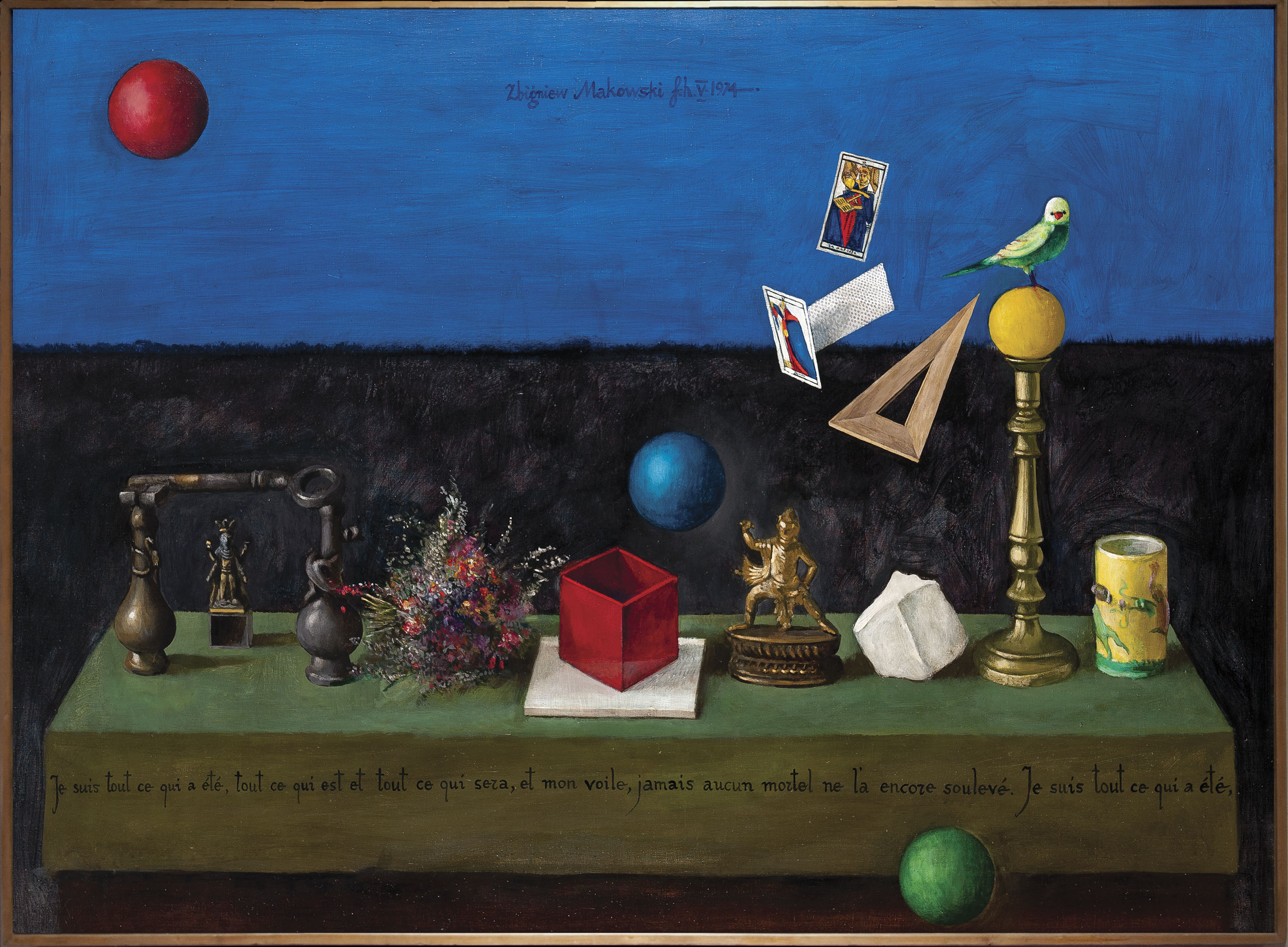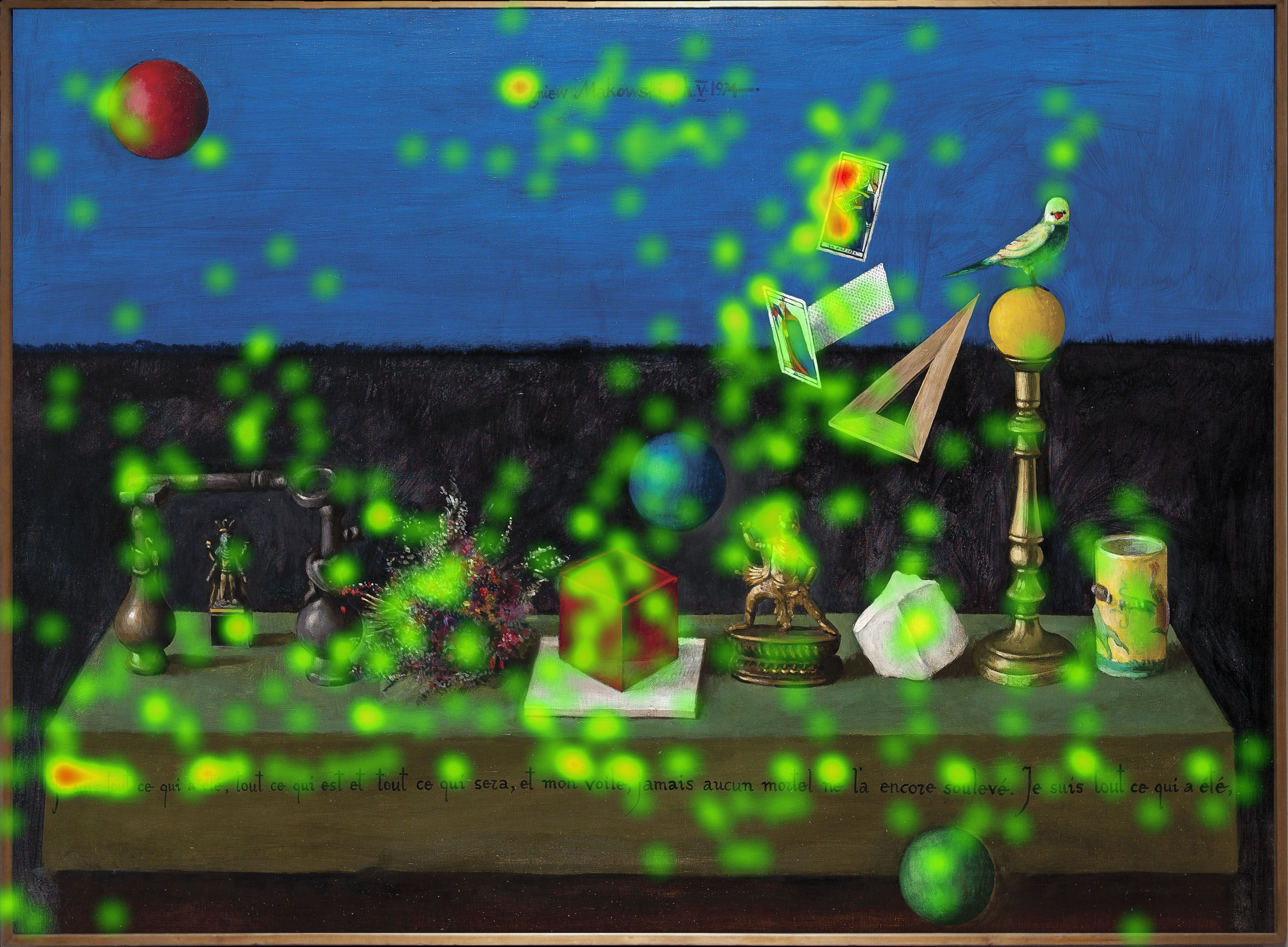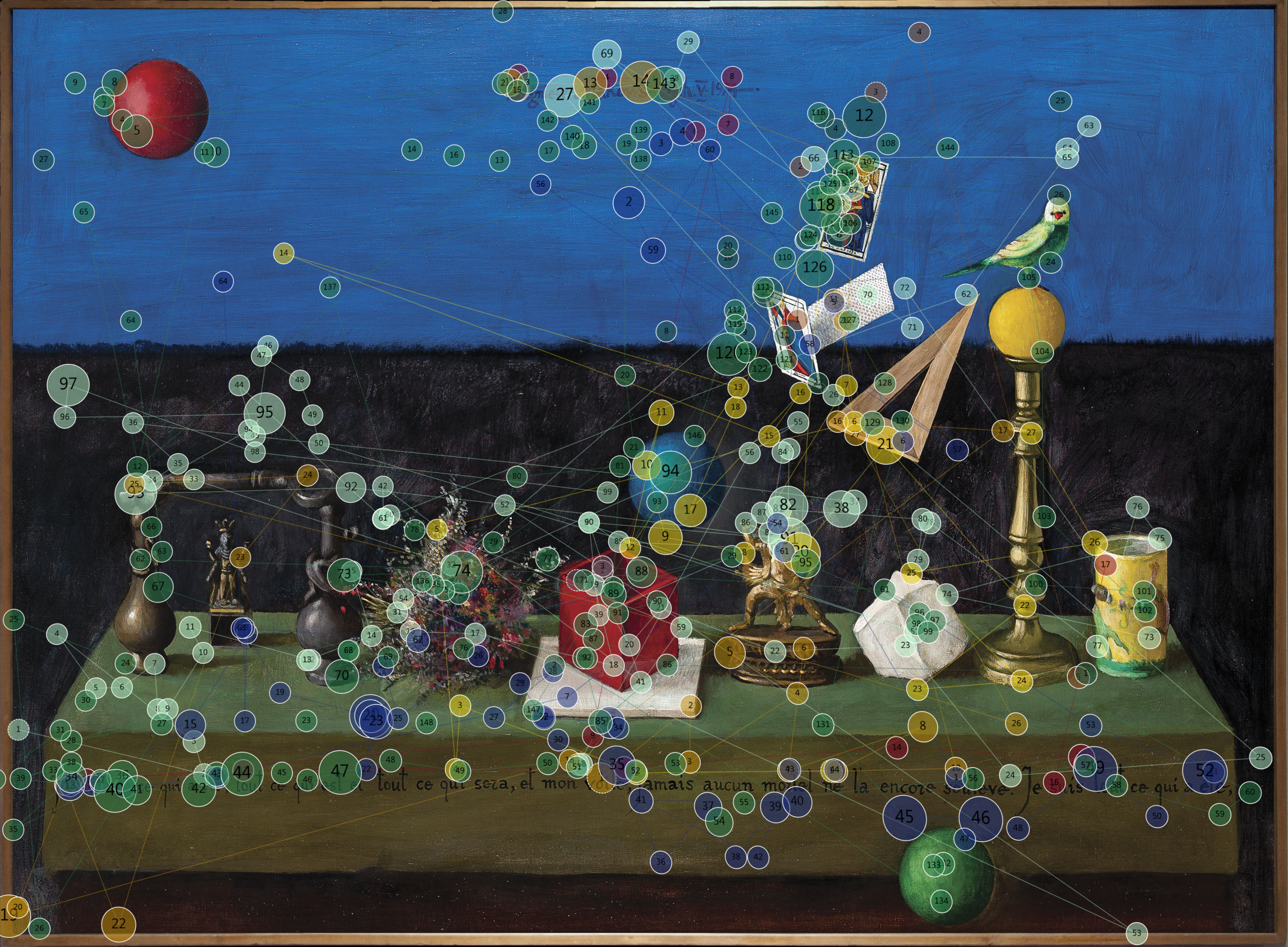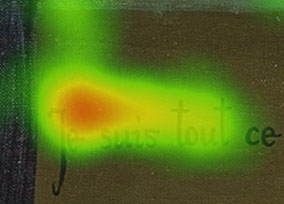
1974, oil on canvas, 110 cm x 150 cm,
average looking time: 17,31 sec.
Perhaps art is imitation, but not just imitation for its own sake.
Z. Makowski
Zbigniew Makowski is a well-known painter and graphic artist, in Poland and worldwide. He was born in 1930 in Warsaw, where he graduated from the Academy of Fine Arts in 1956. Mariusz Hermansdorfer wrote that he was “a painter, a poet, an old and contemporary cultures expert, a secret knowledge guru, a linguist, a storyteller, jumping easily from one topic to another”. In his art we can distinguish two main directions. One involves a large collection of original artistic books, with countless multilingual qotations and exquisite graphics. The other constitutes an extensive collection of oil paintings. Makowski made his debut in the 50s as an existentialist. Then, under the influence of meeting André Breton (1962), he turned towards surrealism. Makowski’s next fascination was informel, which was just one step away from his characteristic paintings, full of objects and words. They were said to be “multi-layered, careless, but also governed by strict rules, abstract and realistic, spiritual and materialistic, respected and sophisticated.”

“Still nature” is an enigmatic work of art, impossible to compare to anything else that has been described in this guide. Makowski, using his perfect skills, creates an ideally balanced composition of supposedly unrelated objects. The artist lets us first enjoy the visual order of the painting, but then gives us a little mystery to solve. Its answer is shown in the inscription below the image of Sais Athena, and in several objects related to various beliefs. Markowski’s works illustrate not only his erudite nature, but also his numerous passions. It is very likely that the key painted on the left side of the picture comes from the artist’s private collection.


Out of just a few details shown above, we can find three elements of particular importance regarding the picture composition. Let’s begin with the French inscription which probably comes from Plutarch’s “De Iside et Osiride”. The words recalled by the artist could be found on the image of Sais Athena, saying: “I am everyhing that has been born, that exists and shall exist, and no mortal will ever uncover my apparel”. It remains unknown why Makowski chose French, and not the Greek original. The piece includes some interpretative hints about particular objects collected on the altar. The other fragment shows an unknown card – perhaps a tarot card. It’s a “suspended” element, completing the composition. The third object is the painter’s signature which, for unknown reasons, constitutes the composition centre in itself. The fact that it was the artist’s name that drew such attention, undoubtedly proves the painter’s success and his almost “living” presence in the work.
Each of us looks at the picture in a different way!

Previous
Tadeusz Dominik “Composition “
Site map
- How to use the guide
- Andrzej Wróblewski “Shooting I, Execution”
- Stanisław Borysowski “K. B. Graphic”
- Tadeusz Dominik “Composition”
- Zbigniew Makowski “Still Life”
- Anna A. Güntner “High School Graduates”
- Zdzisław Beksiński “Untitled”
- Tadeusz Kantor “Multipart – An Umbrella”
- Tadeusz Brzozowski “Favours”
- Jonasz Stern “The Moment of Light”
- Łukasz Korolkiewicz “Dwellers of Sodom”
- Interviews
PROJECT REALISED AS PART OF THE KUYAVIAN-POMERANIAN VOIVODSHIP MARSHALL SCHOLARSHIP
content & graphic design: Łukasz Kędziora | art collection photographs: Krzysztof Deczyński | translation and proofreading by Martyna Kowalska



